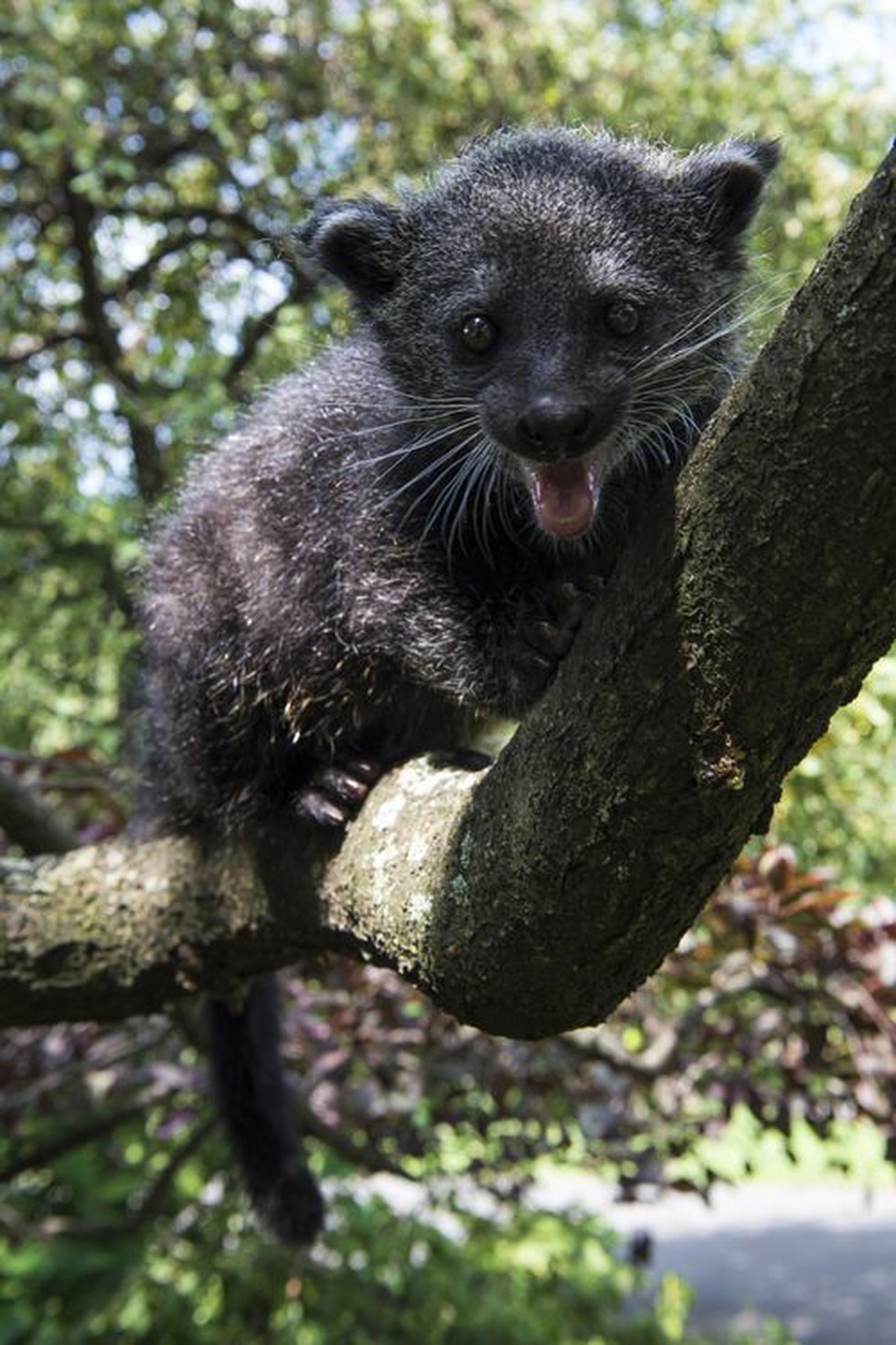About Binturong:
- It is a catlike omnivore of the civet family.
- It is the largest civet in India, colloquially known as the bearcat.
- Scientific Name: Arctictis binturong
- Distribution:
- It is found in dense forests of Southeast Asia.
- Its range extends from Nepal, India, and Bhutan southward to the Indonesian islands of Sumatra and Java and eastward to Borneo.
- Features:
- The head and body measure about 60–95 cm and the tail an additional 55–90 cm; weight ranges from about 9 to 14 kg (20 to 31 pounds).
- It has long, shaggy hair, tufted ears, and a long, bushy, prehensile tail.
- The colour generally is black with a sprinkling of whitish hairs.
- It is principally nocturnal and crepuscular (that is, active during twilight).
- It is found most often among the trees, using its prehensile tail as an aid in climbing.
- It has scent glands, which are located just under its tail. These glands are used to mark trees and foliage to outline an individual’s territory.
- Conservation Status:
- IUCN: Vulnerable
- Wildlife Protection Act of 1972: Schedule I
- CITES: Appendix III
Key Facts about Balpakram National Park:
- It is situated in the West Garo Hills district of the north-eastern state of Meghalaya, about 134 km away from the capital of Shillong.
- It is known as the "Land of Perpetual Winds" due to strong winds that blow across the plateau.
- It is also close to the international boundary of Bangladesh.
- It has been declared a National Park since 1987.
- Lying at an altitude of nearly 3,000 ft. above sea level, it covers an area of more than 200 sq. km.
- There is a deep gorge in Balpakram that is often compared to the Grand Canyon in the United States of America.
- Flora: Among the plants, very rare species like Pitcher Plants (Nepenthes khasiana), Orchids and Drosera flourish abundantly in the park.
- Fauna:
- Elephants and Tigers are the flagship of the park.
- Hillock Gibbons, the only ape species found in India can be seen here.
- Other animals found in the park are Deer, Great Indian Hornbill, Pheasant, Wildcats, Wildcows, Wild buffalo, Leopards etc.
